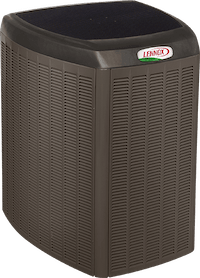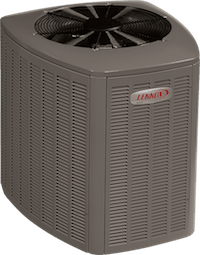Heat Pump vs. Air Conditioner: Which One is Right for Cooling Your Home
Although heat is included in the name, you can use a heat pump for air conditioning. It works by shifting heat instead of generating it (unlike furnaces) which is why it also is used as a heating and cooling appliance. It’s true that heat pumps can be very efficient, but also know that most air conditioners are about equal in terms of SEER rating. Just compare these two luxury level cooling systems from Lennox.


What is SEER and HSPF?
SEER is an efficiency scale for air conditioning systems, and the bigger the number, the more efficient it is. The difference between 23.5 and 26 is not great though, and the efficiency varies depending on the model. On the other hand, HSPF is a different standard that stands for “heating seasonal performance factor” and is unique to heat pumps. It tells you how efficient the unit is at heating. You can tell from these examples when comparing efficiency ratings, air conditioners are mostly equal, if not superior depending on the model you choose. The biggest difference between the two is that heat pumps can also add warmth to your home while an AC only cools.
Does climate matter for heat pumps?
Heat pumps are more effective in warm climates with less severe winters, save for some integrated systems that use heat pumps as backups or auxiliary, such as with a geothermal system. We encourage you to consult with a licensed HVAC pro who has experience in your region before settling on a heat pump. If the equipment just isn’t right for your climate, you could have extremely high electric bills. Once the temperature drops too low, it’s difficult for the heat pump to draw heat out of the air and it may never hit the temperature setting on your thermostat. This means you may end up running your heat pump non-stop or switching on emergency heat 24/7 during cold snaps which drives your energy consumption up.
How does a heat pump stack up against a furnace?
A furnace is a more robust heating system and is critical for certain chillier climates. That’s because a heat pump has trouble when the weather hits about 40 degrees Fahrenheit. As strange as it seems, during heating season, a heat pump is purposed to pull heat from the air outside and use it to heat the inside air. Just because the air outside feels cold, there is still plenty of available heat for the heat pump to function well, but at extremely low temperatures there is not sufficient heat available outside to warm the inside air to higher temperatures needed to stay warm. So while a heat pump may work perfectly during the heating season for someone in Daytona Beach, someone living in upprovince New York with a heat pump would probably also need a furnace for the more extreme temperatures. If you don’t have a furnace that kicks in when the freezing temperatures hit, the heat pump can run for hours trying to keep your home warm enough.
How to achieve maximum efficiency with your heat pump
In some areas, heat pumps can function with geothermal systems, and the heating source is better for the environment since it is not burning fossil fuels and, instead, uses the Earth’s native temperature to heat and cool. This is a great alternative for specific northern areas, but extra land must be available in order to install the correct piping for a geothermal system.
Just what you needed – one more thing to think about when it comes to your home comfort; but, remember, it’s important to examine the pros and cons of each heating and cooling system so you don’t end up installing a system that turns off when extreme temperatures hit, or investing in two systems when one would suffice.
If you can’t decide which system would best fit your needs, call Winnipeg Supply Service Experts to schedule a free in-home quote. We are happy to answer any and all of your questions to help you make the right choice for your home.
